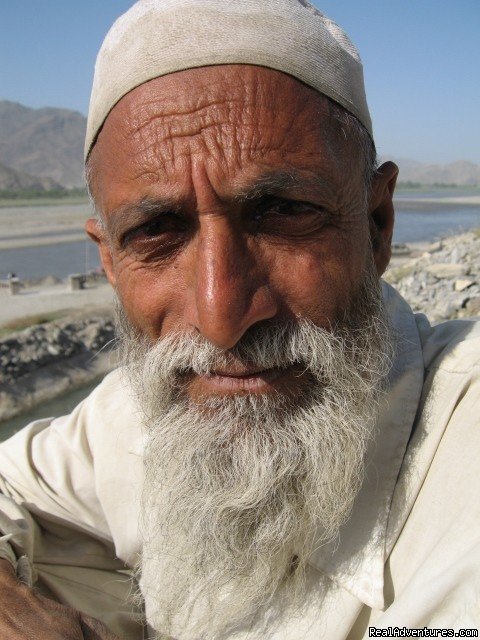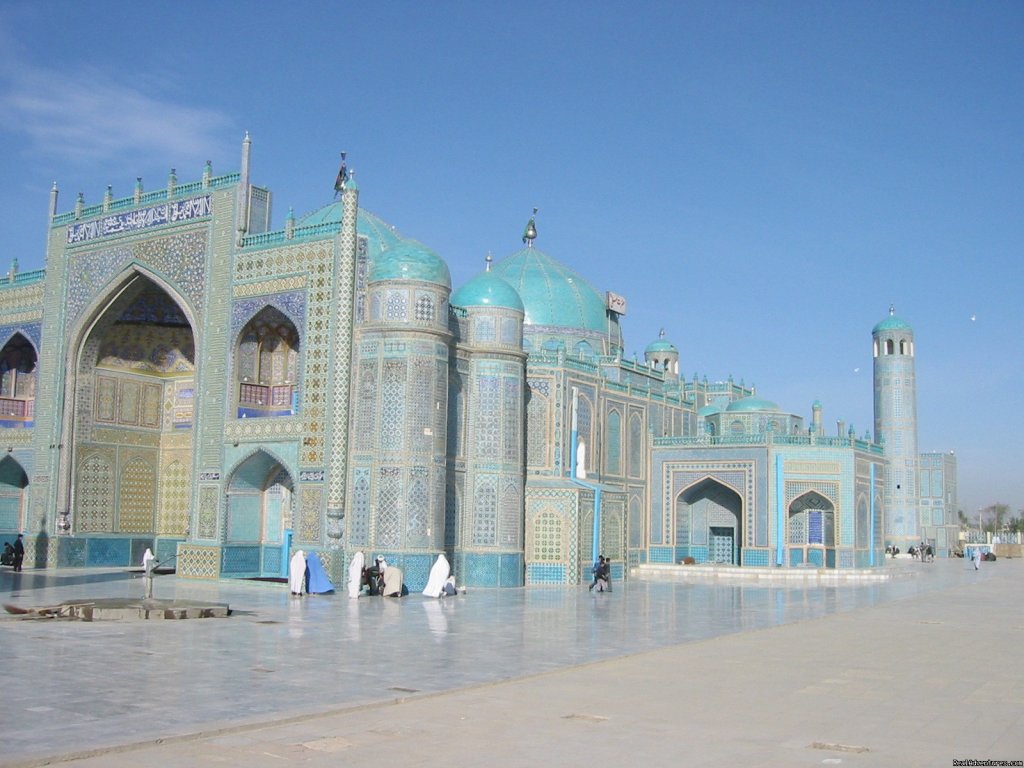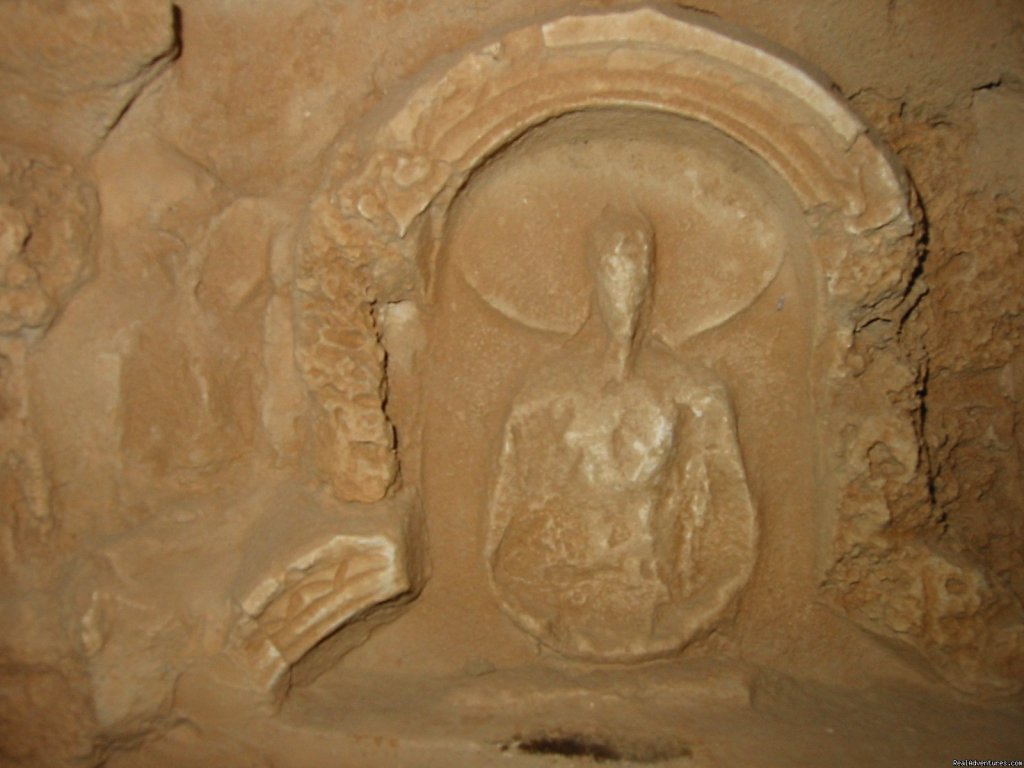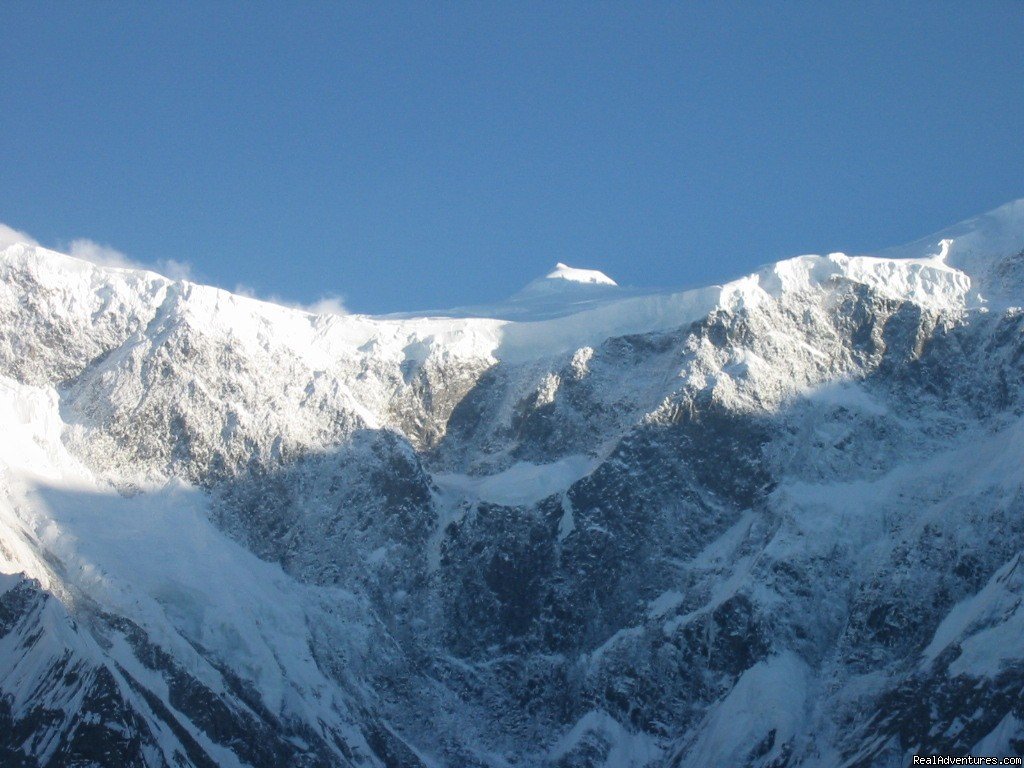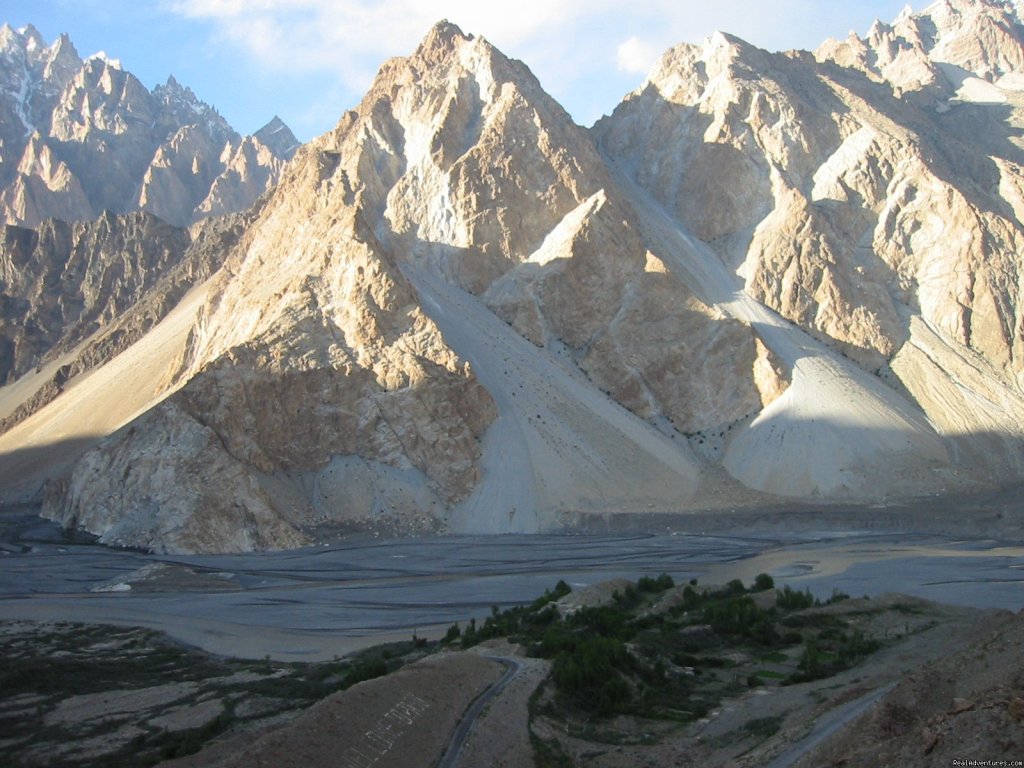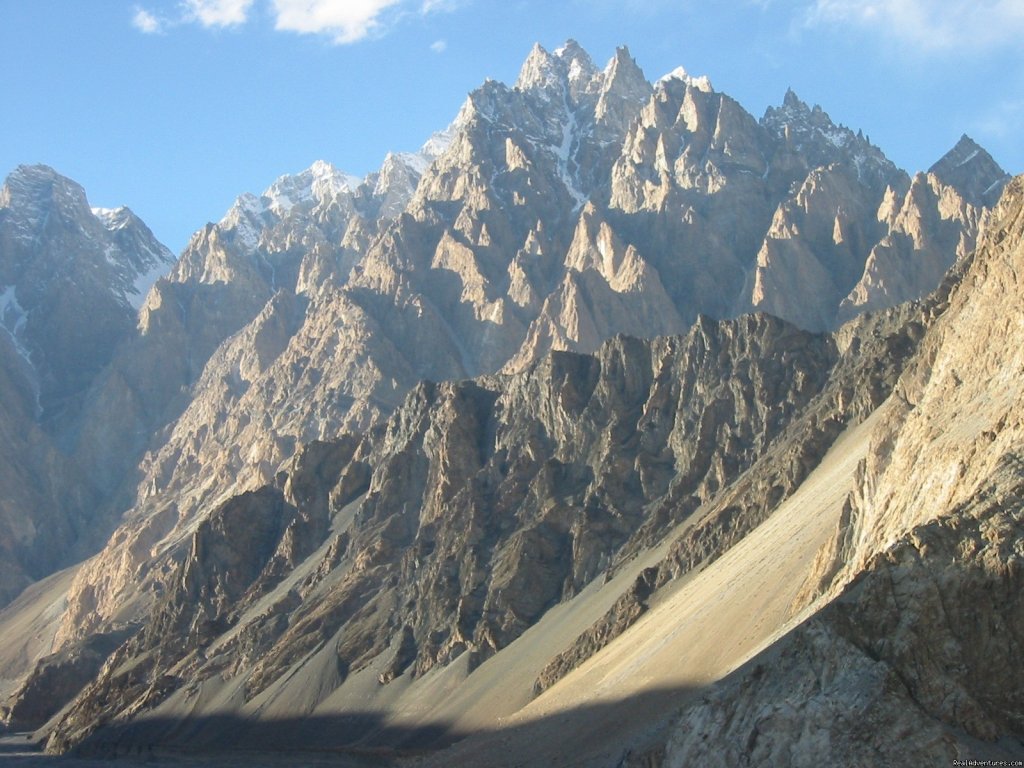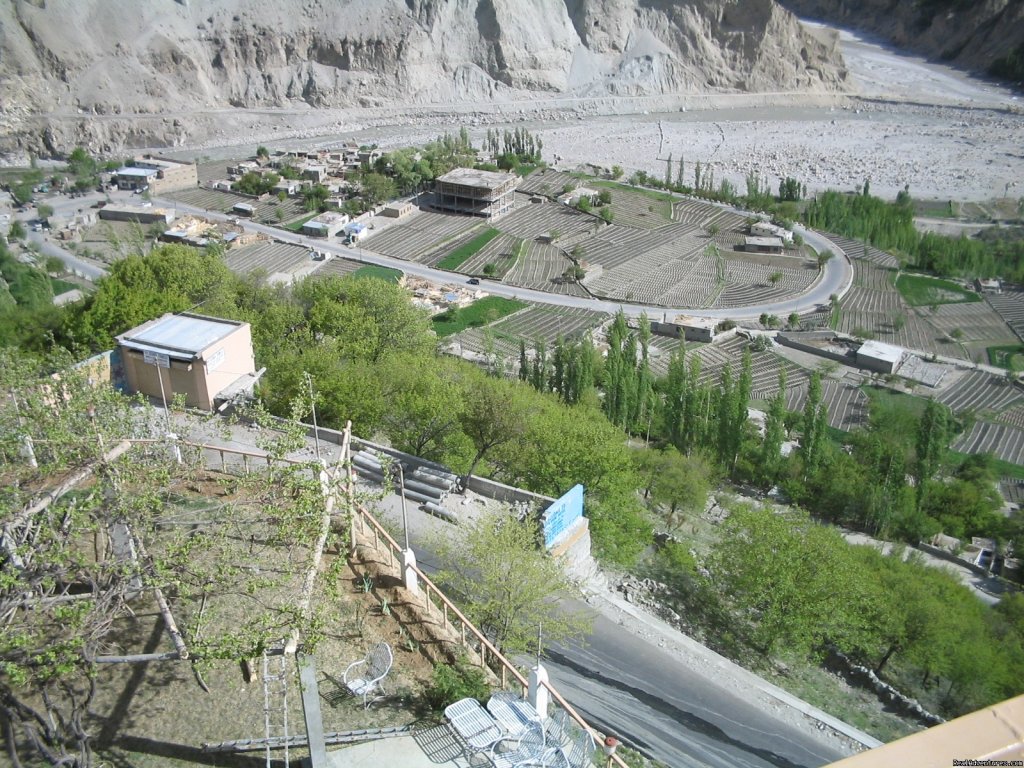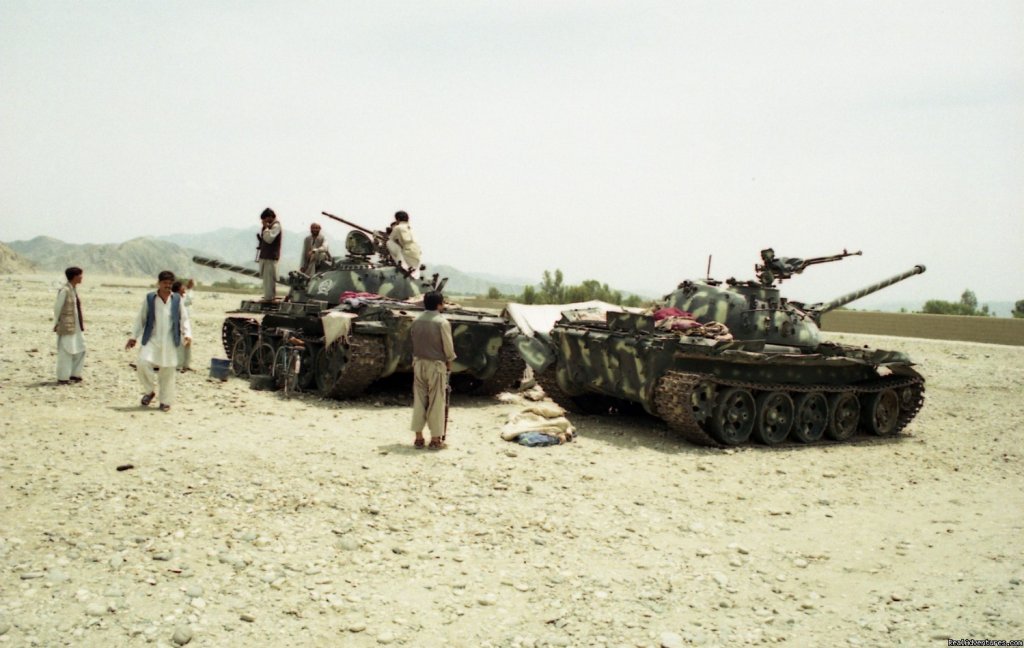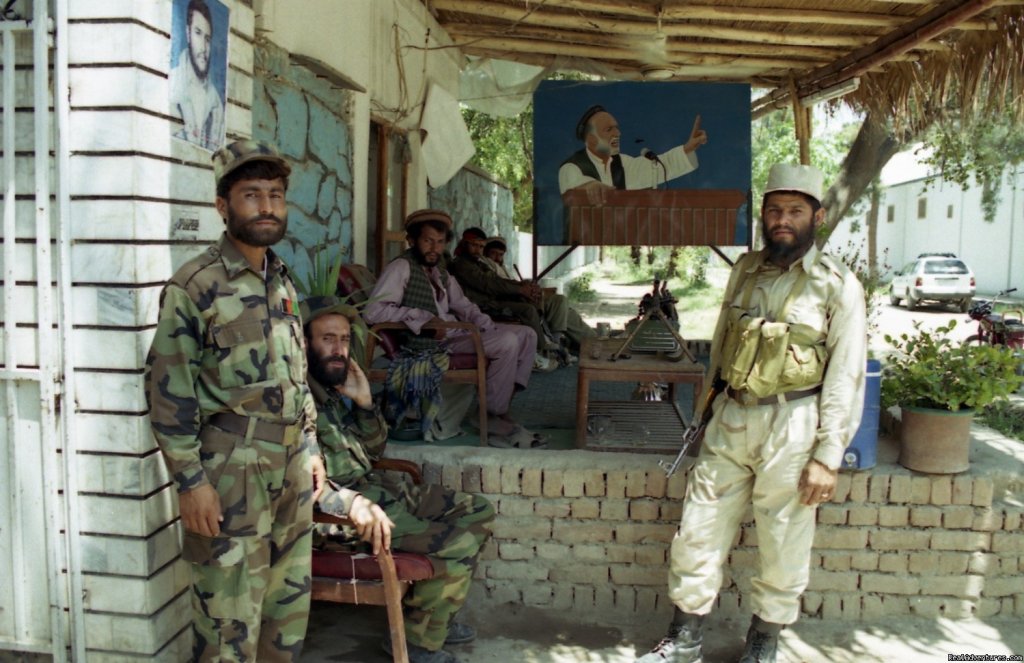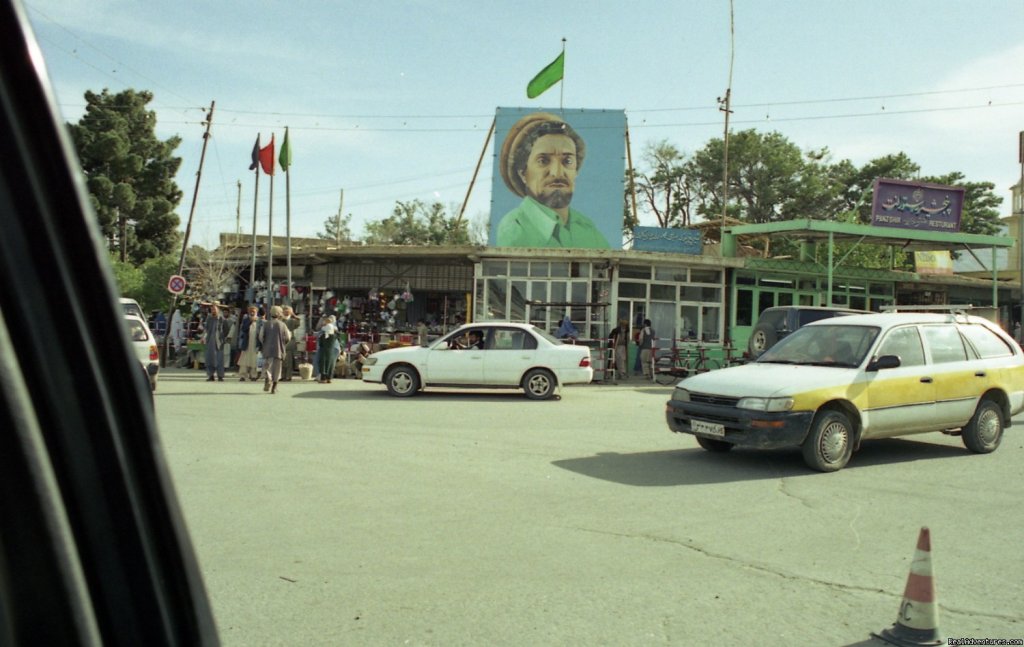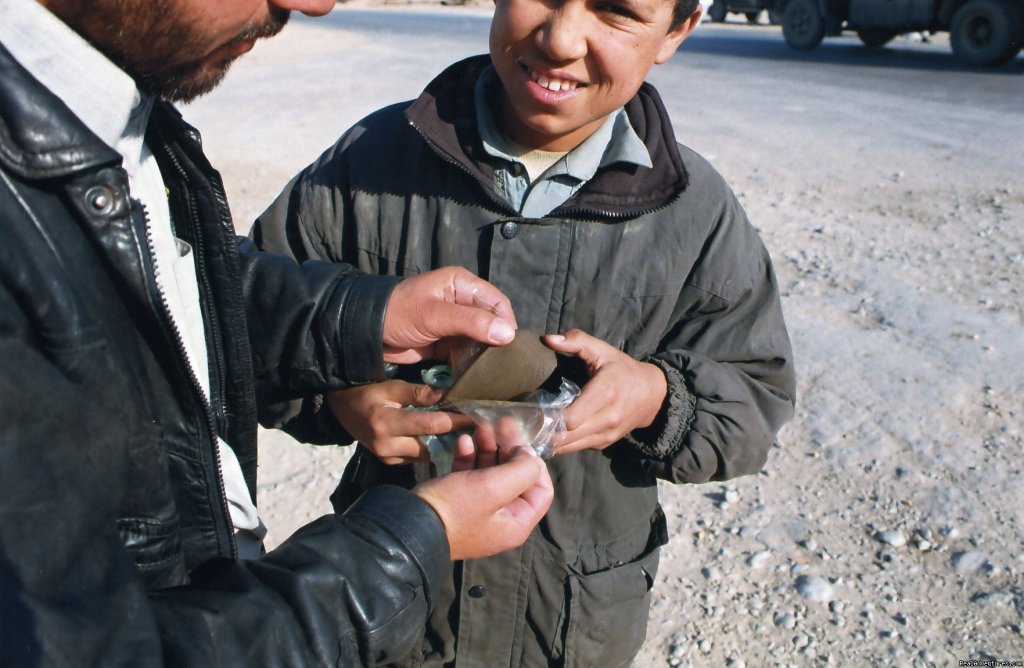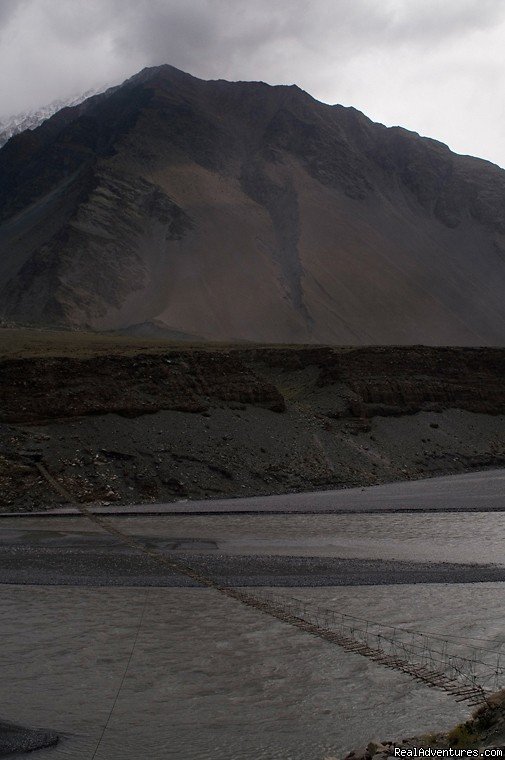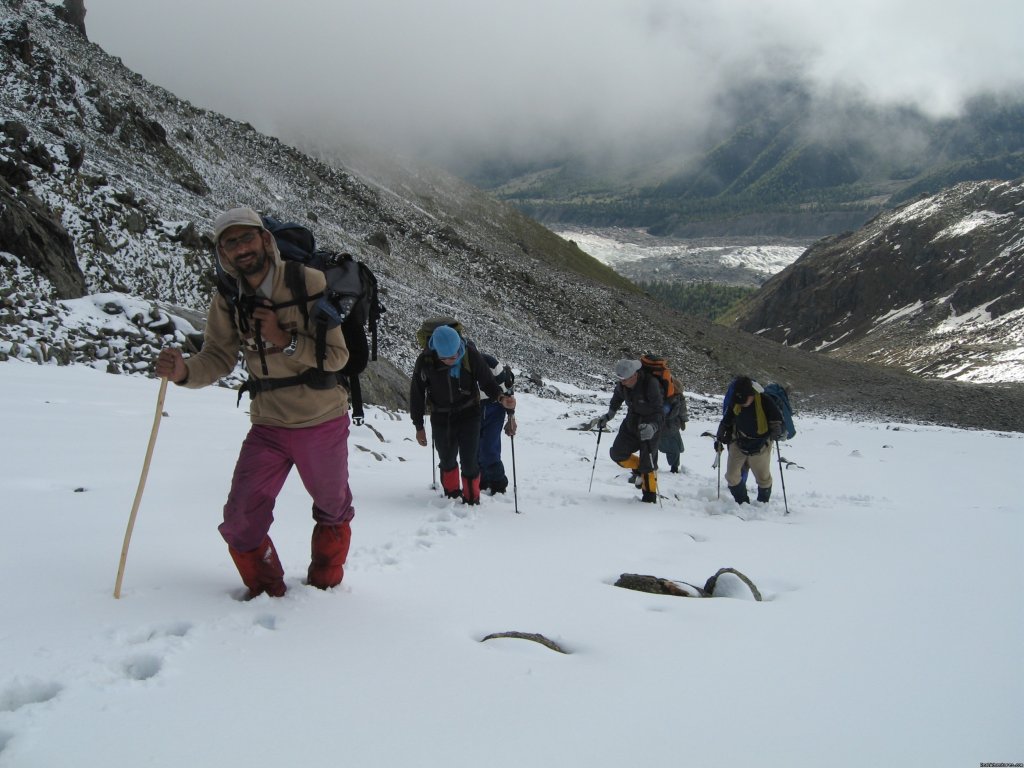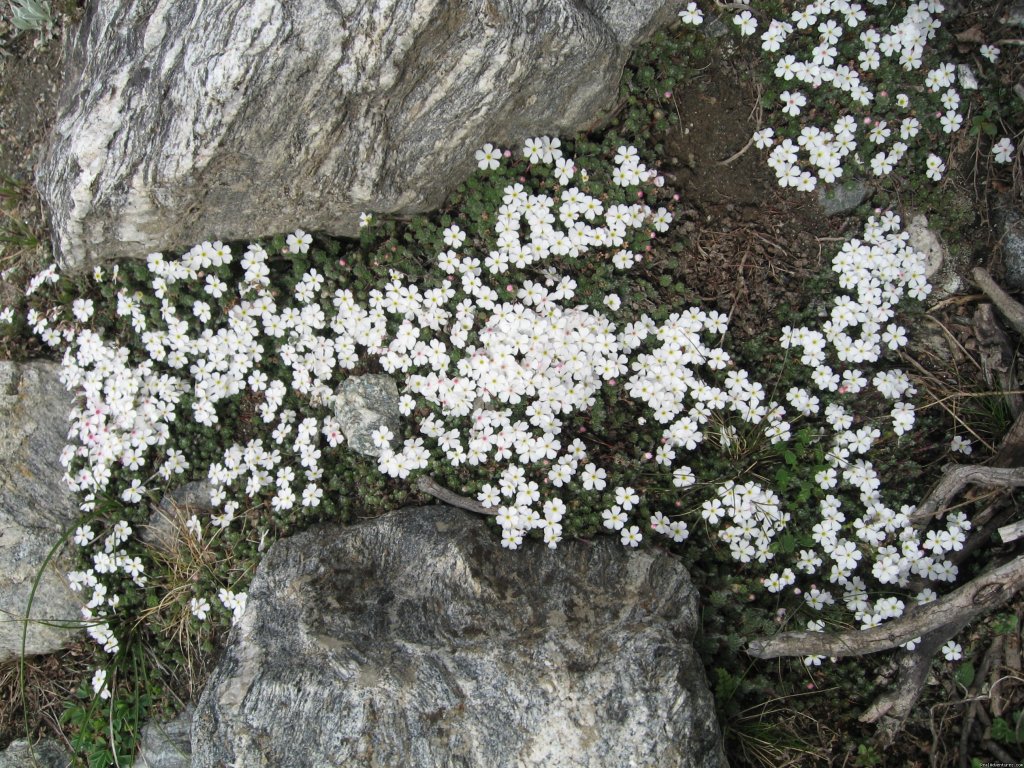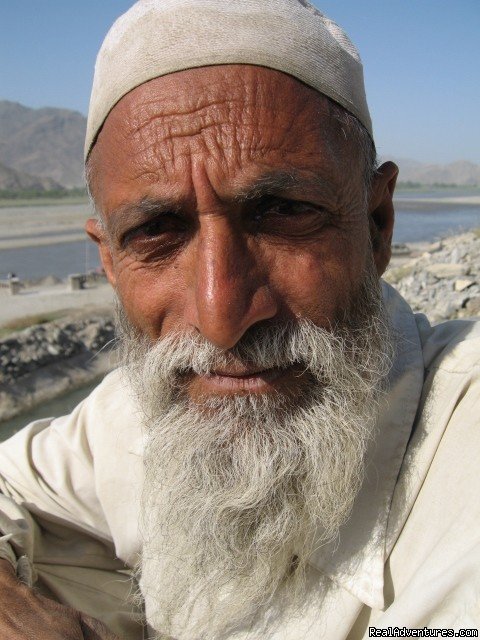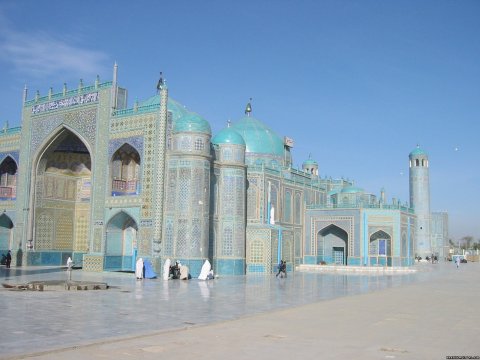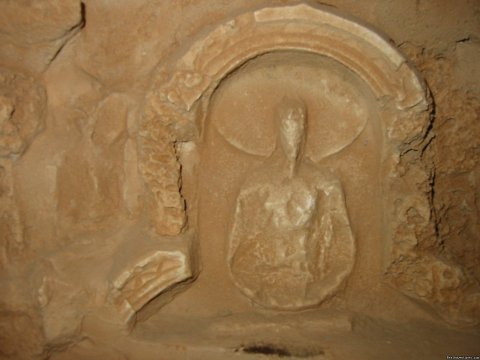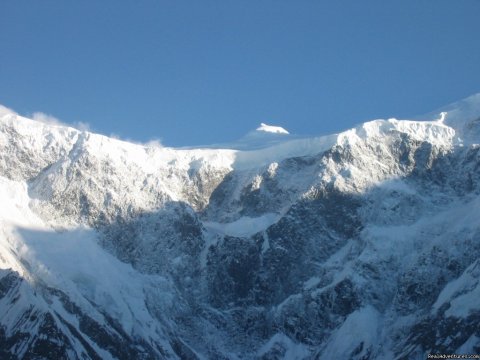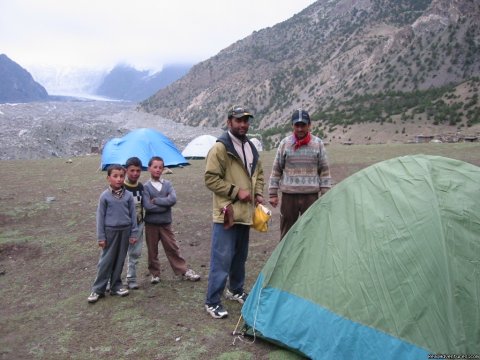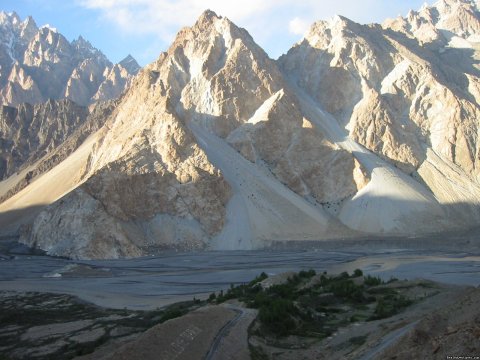(All rates in USD $)From/To
| Low | High | Notes |
|---|
August 2007
| 55
| 100.00
| per pex
|
Trek Along Wakhan Corridorr Our Trek Along Wakhan Corridor, starts at Chitral Valley, the home of Hindu Kush range and Trichmir the highest peak and ends in the beautiful valley of Hunza Valley. The trek runs through the edge of Wakhan Corridor. And the corridor was deliberately made as a buffer zone to curtail the advancing Russian influence into British India during the 18th century.Along the Wakhan Corridor, there exist secluded valleys touching Afghanistan, the ancestral routes that linked the people of Hindukush, Pamir and Karakoram. Mythical places which had known the spirit of great explorers. It is in the extreme North of Pakistan that one has to go to find out this fragrance of frontiers. An extraordinary journey showered with history and romantic reunions. the regions of frontier with Afghanistan have been fascinating my imagination. Via Chitral valley, the extreme West of this group of valleys and passes that dominate for about 200 km, the Wakhan Corridor. Yarkhun River, ferociously raging through the deep valley separating Hindu Kush from Hindu Raj. The river carries in its surfing waves, the alluvium from the door of Pamir. Beyond the first obstacle of the valley the mountain kept its mystery.Our trek Along Wakhan Corridor, provides the opportunity to explore the some of the most beautiful places on earth. Crossing the Chillinji Pass to Hunza and the legendary Karakoram Highway, which falls into Karimabad, the Capital of former Hunza State. Here, we meet people of the people of Hunza known as Hunzukuts. They enjoy welcoming guests to their homeland with smiling faces. In Hunza we visit to the ancient Altiti and Baltit Forts standing on mountain cliffs. The Hunzukuts are the inhabitants of the beautiful Hunza Valley, which Eric Shipton called 滴unza: the ultimate manifestation of mountain grandeur・ In this part of the world, Hunzukuts are the most popular for their hospitality and longevity. On our journey back to Islamabad, we visit some of ancient rock carvings at Shatial.Itinerary:DAY -0 1 ISLAMABADAfternoon sight seeing of twin cities. Islamabad and Rawalpindi. We will start our day program from the old city Rawalpindi Raja (king) bazaar. It is a lively, busting city with crowded streets and colorful bazaars. But it lacks the monuments like some other cities of Pakistan. Rawalpindi was a small settlement until the Mughals built the Shahi (imperial) road from Delhi to Kabul in the 16th century. The Raja and Sadar bazaars' crowded streets with vendors selling jewelry, brass and copper, inlaid furniture and Kashmiri embroidery. It is the place where you can buy anything. After Rawalpindi we will now go to the new Capital city of Pakistan, Islamabad. This city nestles the backdrops of the Margalla hills. President Ayub Khan took the decision for a new capital in 1958. Karachi was the first capital after independence. In Islamabad we will visit the Daman-e-Koh, Shah Fasial Mosque, the Shrine of Barri Imam and the Lok Virsa.DAY -02 ISLAMABAD ・PESHAWARDeparture in the morning. Approximate three hours journey to Peshawar, the provincial capital of NWFP. Transfer to a comfortable, air-conditioned hotel. On the footsteps of Alexander the great, Marco polo, Akbar, Lawrence of Arabia, and Afghan Mujahideen, we shall discover this city of intriguing people. The rest of the day will be reserved for the visit of the city, especially of its famous bazaars (carpets, jewelry in Afghan shops). Overnight in hotel.About 172 kms west of Rawalpindi/Islamabad and about half an hour by air, lies the ancient and legendary Peshawar - city of the proud Pathans. Peshawar the capital city of North-West Frontier Province, is a frontier town, the meeting place of the sub-continent and Central Asia. It is also a place where ancient traditions jostle with those of today, where the bazaar in the old city has changed little in the past hundred years except to become the neighbour of a modern university, some modern hotels, several international banks and one of the best museums in Pakistan.DAY -03 PESHAWAR ・CHITRALFlight to Chitral or drive in the morning for a very long step: 12 to 15 hours of journey depending upon the traffic conditions. We leave Peshawar on our way to Malakand Pass, Chakdara, and Dir, from where we start to climb towards the Lowari Pass (3,200 m), the pass with forty hairpin bends. Arrival at Chitral, the old capital of Princely State, abolished in 1970.You will find many afghan shopkeepers in the Shahi bazaar, the commercial centers of town. Over night in a comfortable hotel.The Chitral Valley at an elevation of 1,128 metres is favourite with mountaineers, anglers, hunters, hikers, naturalists and anthropologists. The 7,705 metres Trichmir, the highest peak of the Hindukush mountain, dominates this 322 kms. long exotic valley.Chitral district has Afghanistan on its north, south and west. A narrow strip of Afghan territory, Wakhan, separates it from Tajikistan. The tourist season in Chitral is from June to September. The maximum temperature in June is 35 C and the minimum 19 C. In September the maximum is 24 C and minimum 8C.DAY -04 CHITRAL ・KALASH VALLEYSOne of the major attractions of Chitral are the Kalash valleys- the home of the Kafir-Kalash or "Wearers of the Black Robes", a primitive pagan tribe. Their ancestry is enveloped in mystery and is the subject of controversy. A legend says that five soldiers of the legions of Alexander of Macedonia settled in Chitral and are the progenitors of the Kafir-Kalash.Over 3,000-strong Kafir-Kalash live in the valley of Birir, Bumburet and Rambur, south of Chitral. Bumburet, the largest and the most picturesque valley of the Kafir-Kalash , is 40 kms. from Chitral and is connected by a jeep-able road. Birir, 34 kms. away is accessible by a jeep-able road. Rambur is 32 kms from Chitral.The Kalash women wear black gowns of coarse cloth in summer and hand-spun wool dyed in black in winter. Their picturesque headgear is made of woolen black material decked out with cowry shells, buttons and crowned with a large coloured feather.It takes two hours in a jeep on a difficult track to reach Bumburet, the heart of Kalash region. The rest of day will be reserved for the discovery of this peculiar culture. Camp in a hotel or tent.DAY -05 KALASH ・CHITRAL VALLEYSAfter driving back to Chitral, we visit the old Fort and Shahi Mosque. Night at the same hotel as the day of arrival.It take two hours in a jeep on a difficult track to reach Bumburet, the heart of Kalash region, The rest of day will be reserved for the discovery of this so peculiar culture. In the afternoon back to Chitral for Overnight stay.DAY-06 CHITRAL-SHOLKOT (2700M)Drive by Jeep to Sholkot. It is 8 hours drive by jeep. You will take a break in Mastuj for lunch. Camps in a beautiful Garden. DAY-07 SHOLKOT-LASHT (3350M)Drive by jeep to Lasht. It takes about 5 hours to reach end of jeep road where local guide will arrange porters for trekking. The camp will be done on a green pasture. DAY-08 LASHT-KISHMANJACAMP (3410M)Agriculture, especially poppy field becomes lessor and lessor and the terrain becomes very dry. On the Northern slopes the other side of the river, open up large glacier valleys, dominated so many virgin peaks waiting for their first climbers. Passage through Ghararum, then at the level of Khan Khun, we shall have to wade through the river (easy but the water is cold). Another 2 hours walk before we camp near the village of Kishmanja 6 hours walk.DAY-09 KISHMANJA - CHIKAR (3700 M)About one hour to take a round of a landslide and reach the village of Kishmanja. Than 3 hours walk along the river Yarkhun at the foot of the great Chhatiboi Glacier, we cross the river before climbing to Chikar, one of the last permanent villages of the valley .4 hours walk in grandiose environments.DAY -10 CHIKAR - LASHKARGAZ (3800 M)After descending to river level, a last police check post before we enter the valley, very large in the beginning .We go through at the foot of the Broghil PASS, The earliest crossing point in this mountain range, for Afghanistan (on foot naturally as there is no infrastructure in this region). Camp at Irshod Lashkargaz the last permanent inhibited place in this valley. 7 hours of walk.DAY -11 LASHKARGAZ - KARAMBAR AN (4343 M) - KARAMBAR LAKE (4150 M)Superb walk among rolling hills passing through the herds of Yaks. After crossing Showarshar (3840 m), we gently climb up to the Karambar pass. Camp at the bank of the lake, after one-hour walk descending from pass. On our left are Afghan border (Wakhan corridor) 7 hour walk.DAY-12 CLIMBING CHOTA PAHAD (5740 M)Though the area is very reach for 5000 & 6000 meter peaks but a the most spectacular peak know as CHOTA PAHAD, it mean in Urdu is small peak situated on left side Karambar Lake. From the top of the peak one can easily sea many beautiful mountains in Pamir & Hindu Kush region. The peak is not technically difficult so all trekkers having experience of strenuous trekking can climb it with out any difficulty. It is communication of rock with snow. DAY -13 KARAMBAR LAKE - SHOWINJ (4000 M)After walking along the Karambar Lake, we start descending in the wild valley of Karamber. Camp at Showinj, with beautiful view around 4 hours walk.DAY-14 SHOWINJI-CHATIBOIGLACIER-SUGHTARABAD (3600 M)A 2 hours decent trek to Chhatiboi Glacier, which we would need to cross. This glacier which comes from a lateral valley of Right Bank, completely cuts off the Karambar valley (Karambar River passes completely under the glacier). The crossing is without difficulty, but you should not leave the trail followed by local shapers and their herds (about 3 hours walk on this glacier). Still one-hour walk to reach some shaper huts under willow trees where we shall put up our camp.6 hours walk.DAY-15 SUGHTARABAD-CHILLINJI FOREST (3600 M)In order to avoid a fast torrent, we have to climb a bit to cross easily the terminal end of a small glacier. Then a good track, still on right bank take us at a gondola crossing (the modern version of a monkey bridge) which takes us across the tumultuous Karambar River, impressive and easy step. This crossing takes some time as the gondola can not take more than one person at a time, and our caravan is big; more over the river is wide. Geographically we are now in Karakoram (Karambar River is considered as border between Hindu Kush and Karakoram). Camp at the foot of very high mountains 4 to 5 hours walk.DAY-16 CHILLINJI FOREST - CHILLINJI BASE CAMP (4500 M)First along the moraine of Chillinji Glacier, crossing through the primary forest of willows, then along a little torrent coming from a fossilized glacier, we climbed as much as possible to put up our camp on the " Shelf" dominated by Chillinji An (5291 m) and Khan peak (5500 M approx.) 7 hours walk.DAY-17 CHILLINJI BASE CAMP-CHILLINJI AN (5291 M)Long step to cross the pass and descend on the other side .The climbing of the pass is from a steep slop having snow or ice; this is the only delicate part of this trekking. From the top of the pass, you have a beautiful of adjoining Xinjiang and Karakoram at a distance. Rapid descent, at first on the glacier.(No technical problem) and then through moraines up to the Biater 7 hours walk.DAY-18 BIATER - CHIPURSON ZIARAT (3860 M)An easy trek of 4 to 5 hours. You will come across some water streams which are difficult to cross. This is last day of trek where you will say good by to your porters.(END OF TREKKING)DAY-19 ZIARAT (3860 M) ・ KARIMABAD HUNZA (2300 M)Start an early jeep journey up to Sust, where short break will be offered for Lunch. Sust, the last frontier post for going to china. After lunch drive to Karimabad Hunza the most beautiful in the tourist point of view in Pakistan. Rest of the day is spare for visiting Baltit forts. Overnight in hotel. 6 hours drive in total.DAY-20 KARIMABAD - CHILASDrive to Chilas. The heat takes again. We need 6 to 7 hours of road along the mighty Indus. passing at the foot of Nanga Parbat (8147 m), the Killer Mountain. Night at a hotel. DAY-21 CHILAS -ISLAMABADIt is a 12 hours drive we will reach Islamabad. Transfer to hotel.DAY-22 FLIGHT TO DESTINATIONNote: If time allows one more date can be added for Hunza Valley to make this program more interesting

